 Petzlover
Petzlover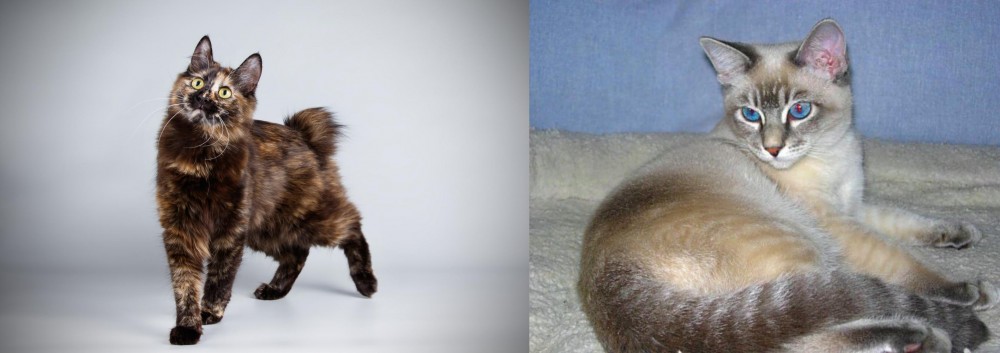 Japanese Bobtail is originated from Japan but Tiger Cat is originated from United States. Both Japanese Bobtail and Tiger Cat are having almost same weight. Japanese Bobtail may live 5 years less than Tiger Cat. Both Japanese Bobtail and Tiger Cat has same litter size. Japanese Bobtail requires Low Maintenance. But Tiger Cat requires Moderate Maintenance
Japanese Bobtail is originated from Japan but Tiger Cat is originated from United States. Both Japanese Bobtail and Tiger Cat are having almost same weight. Japanese Bobtail may live 5 years less than Tiger Cat. Both Japanese Bobtail and Tiger Cat has same litter size. Japanese Bobtail requires Low Maintenance. But Tiger Cat requires Moderate Maintenance
 It is believed that these naurally-occuring short-tailed domestic cats in Japan arrived from the Asian continent about 1 000 years ago.
It is believed that these naurally-occuring short-tailed domestic cats in Japan arrived from the Asian continent about 1 000 years ago.
It was way back in 1602 that the Japanese authorities made it that all cats be released to tackle the rodent problem that were threatening the nation's silkworm population.
Bobtail cats were the street cats of Japan. In 1968, the cat was imported to the Western Hemisphere from Japan and in 1976 the shorthaired Japanese Bobtail was accepted for Championship status in the Cat Fanciers’ Association.
There are a number of cat’s breeders in North America and Europe, but it is still a rare cat. Today, the Japanese Bobtail is a recognized breed by all major registering bodies.
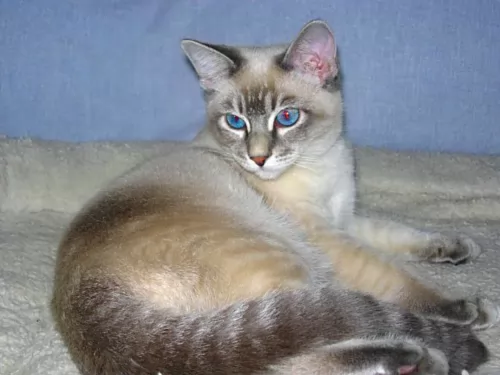 The Tiger cat isn’t actually one breed as such, as it certainly isn’t a combination cat from a mating between a Tiger and a domestic cat as that is just plain impossible.
The Tiger cat isn’t actually one breed as such, as it certainly isn’t a combination cat from a mating between a Tiger and a domestic cat as that is just plain impossible.
Tiger cats are simply certain cat breeds that have patterns that make them look similar to the big, wild Tiger of India.
It is thought that striped tabby cats are Tiger cats. Tabby cats are often called Tiger cats because of their striped fur pattern. These tabby cats aren’t a breed either but rather a cat with a certain pattern.
The Tiger Cat can actually be any of a pure-bred cat breeds you get and this could be American Shorthairs, American Bobtails and Maine Coon cats.
 The medium-sized, long, lean and muscled Japanese Bobtail, with long slender legs, is known for its unusual bobtail. People liken the tail to that of a rabbit. The tail must always be visible though.
The medium-sized, long, lean and muscled Japanese Bobtail, with long slender legs, is known for its unusual bobtail. People liken the tail to that of a rabbit. The tail must always be visible though.
The head has a triangular shape and the neck is neither too long or too short. The ears are upright and set wide apart. The oval-shaped eyes are large.
The hind legs are longer than the front legs. The cat weighs between 3 and 6kg and comes in almost any color and pattern but it is thought that the triple-colored ones are the most favored in Japan.
The coat is of medium length and is soft and silky. The head of the cat is triangular with the ears being large and wide apart. The eyes are large and oval-shaped.
The Japanese Bobtail makes a good feline pet for families. They get on well with children and are affectionate and loving with all their human family members.
They’re talkative cats too, enjoying communication with people and using soft noises. It’s an intelligent cat and one that happens to love water too, and is a playful cat, making a great loyal companion.
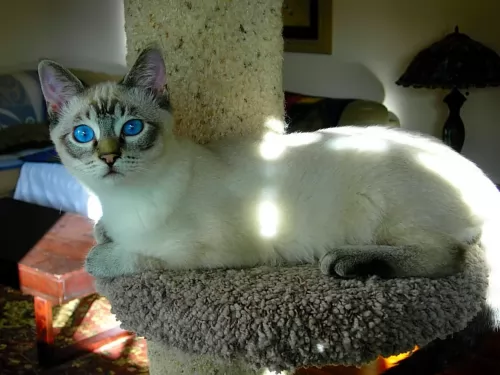 Just some of the cats out there that look like Tiger cats are the Bengal, the Savannah cat, the Toyger, Bombay, and Abyssinian.
Just some of the cats out there that look like Tiger cats are the Bengal, the Savannah cat, the Toyger, Bombay, and Abyssinian.
Some of these cats are larger than the others. The Toyger is the perfect example of these domesticated Tiger-like cats. It’s a cat that is a mix between a Bengal and an ordinary cat from India.
They can be fairly large these cats and weigh anything between 4 and 7kg, possibly more. It looks like a Tiger – the whole purpose of breeding them in the first place.
The coat is short and thick with orange and gold tones and black stripes. They come in in red, brown, or grey shades but the coat is always striped.
Because tiger cats are actually tiger-striped tabbies, they come with the typical Tabby cat personality.
Sometimes they can be aloof and mysterious but most times they are social and friendly. They thrive on the attention they get from their human family,
 The Japanese Bobtail is such a sweet, playful, loving cat. The cat loves to be with his human family and is highly intelligent.
The Japanese Bobtail is such a sweet, playful, loving cat. The cat loves to be with his human family and is highly intelligent.
They are quite capable of learning tricks and playing games much like a dog. They are social cats and while they aren’t lap cats, they seek out the company of their human family, making use of a soft voice to communicate.
They’re such sweet cats and are adored by those who have brought them into their home as a pet and friend.
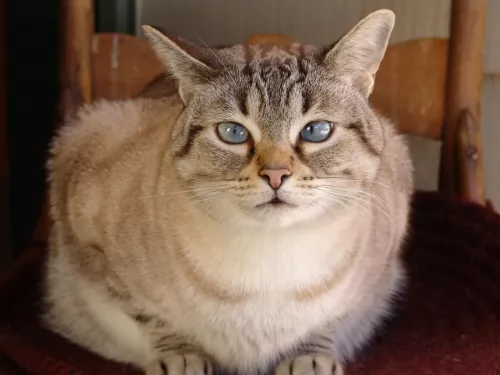 The Tiger cat, just like any other cat, wants to have a good home where he is loved and cared for. Because the Tiger cat is describing a coat and not an actual cat breed, the Tiger cat can come with many different kinds of personalities. He can be lively and vocal or quiet and shy. Many pets turn out with personalities similar to their owners.
The Tiger cat, just like any other cat, wants to have a good home where he is loved and cared for. Because the Tiger cat is describing a coat and not an actual cat breed, the Tiger cat can come with many different kinds of personalities. He can be lively and vocal or quiet and shy. Many pets turn out with personalities similar to their owners.
If you decide to take in a Tiger cat, it is your duty as a responsible pet owner to ensure his wellbeing and happiness.
 Just like any other cats, the Japanese Bobtail suffers from any one of the different health problems there are. The Japanese Bobtail is a healthy cat generally and he can easily reach 15 years of age with good care.
Just like any other cats, the Japanese Bobtail suffers from any one of the different health problems there are. The Japanese Bobtail is a healthy cat generally and he can easily reach 15 years of age with good care.
Look out for obesity. Obesity comes with a host of health issues, putting a strain on the cat’s joints as well.
You want to manage your furry friend’s food portions to ensure he remains lean and muscular. Feed your adult cat twice daily. Discover what your cat likes in terms of dry cat food, semi-wet or wet cat food.
Your cat is a carnivore and requires quality meaty foods. The best, high-quality cat foods always have meat at the top of the ingredients list as they need meat to get all the right nutrients in.
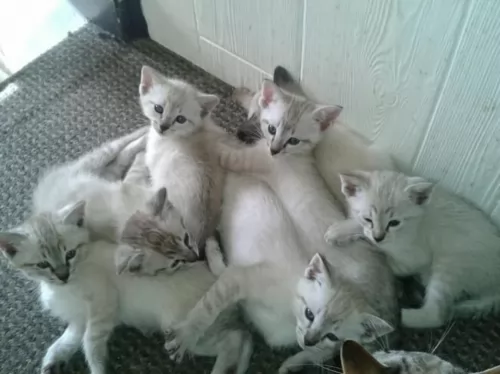 As a pet owner, you have to be able to recognize the signs of an animal that is sick. If your cat persists with his problems, you will need to get him to the vet so that the vet can conduct a careful examination to get to the root of the problem.
As a pet owner, you have to be able to recognize the signs of an animal that is sick. If your cat persists with his problems, you will need to get him to the vet so that the vet can conduct a careful examination to get to the root of the problem.
Did you know there are several cat vaccinations your cat must have to avoid some of the deadly cat diseases there are?
Some of the common cat diseases to look out for are diabetes, hyperthyroidism, bladder infection and eye problems.
 The cat’s medium coat sheds moderately, and a brush once a week to remove the loose hairs will be sufficient. You’ll want to brush him more often during his shedding seasons.
The cat’s medium coat sheds moderately, and a brush once a week to remove the loose hairs will be sufficient. You’ll want to brush him more often during his shedding seasons.
Help with keeping your Japanese Bobtail clean by scooping his droppings out of the litterbox at least every day and also changing the litter at least every week.
When you bring your Japanese Bobtail kitten home, you’ll have to take him to the vet. This is because from 8 weeks of age your kitten will need to get his first vaccines. Booster vaccines for your cat will also be required later on.
Provide your cat with a scratching post to prevent him from scratching your furniture.
Never leave your Japanese Bobtail without a constant supply of fresh, cool water.
Wash your cat’s water- and food bowls every second day to prevent bacteria from building up.
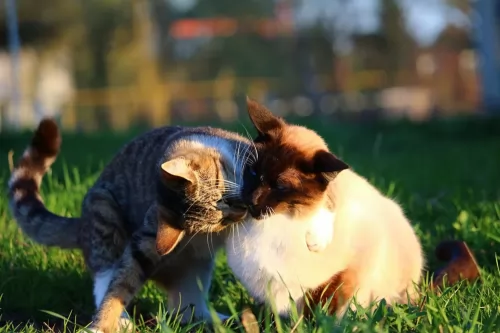 Cats are fairly easy pets to care for and they are able to adapt to different lifestyles and environments too.
Cats are fairly easy pets to care for and they are able to adapt to different lifestyles and environments too.
Before you bring a cat into your home, make sure that you have everything ready to welcome your pet. These are things such as food and water bowls, a soft bed, litter box, toys, a brush, scratching post as well as other cat accessories to make his life comfortable.